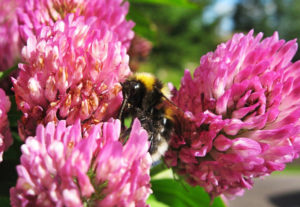
Thyme and savory very often there are questions: what do the two plants have in common and how do they differ from each other?
Both belong to the family Lamiaceae, decorative, spicy, medicinal, honey-that’s probably all the common features. But there are much more differences, since these are two completely different plants.
Thymus serpyllum
(image above)
This is an excellent groundcover plant with a height of 15-20 cm (5.9-7.9 inches). It is especially decorative during the long flowering period (June-August), when it forms live pink carpets.
Features of Thymus serpyllum
In one place, thyme grows from 4 to 5 years. Planting scheme 30×40 cm (11.8×15.7 inches), 2-3 plants are placed in one place. Prefers well-drained, light, fertile, lime-rich soils.
Where to meet Thymus serpyllum in nature
It is found in places with sandy, stony soils: slopes, dry meadows, roadsides, among shrubs, in light forests of the forest-steppe, steppe (less often-forest) areas of the European part, Western Siberia.
Application of Thymus serpyllum
The apical parts of non-woody branches collected before flowering are used for food: as a seasoning for salads, borscht, soups, meat and fish dishes, cheeses, pickles, marinades, sauces, as a flavoring for tea. For medicinal purposes, the herb is used, which has an expectorant, antibacterial, antispasmodic, analgesic, soothing, secretolytic effect. It is contraindicated in pregnancy, cardiac decompensation, liver and kidney diseases.
Satureja hortensis
It is an annual plant native to the Eastern Mediterranean, Iran. Dense, quite compact, at first glance inconspicuous, but it will conquer any kind of subtle fragrance.

When planting, observe the distance between the plants 10-15 cm( 3.9-5.9 inches), between the rows 20-30 cm (7.9-11.8 inches). It is undemanding to the soil, but it grows better on a fertile, light one. During the flowering period, the pastel, white-lilac color scheme of the composition will be maintained. It is recommended for planting on a spicy bed, in a mixborder – as a companion or filling element, as well as in a border, with pruning twice a season (at the beginning of flowering) at the height of the stem branching
Application of Satureja hortensis
Fresh, dry, salty, pickled young herbs with a taste of hot pepper are used for food: as a seasoning for salads, sauces, meat, fish, vegetable dishes. For medicinal purposes, the herb is used, which has a bactericidal, antihypertensive, astringent, antispasmodic, mild diuretic, antiseptic, anthelmintic effect. In high doses, it is contraindicated in pregnancy.
In addition to satureja hortensis, S. montana is used in the culture, which is valued for its stability (frost-resistant, drought-resistant, can grow in partial shade, but blooms profusely only in open sunny places) and late flowering (from July to September). The flowers are white and pink with purple spots, with a balsamic smell.





Leave a Reply